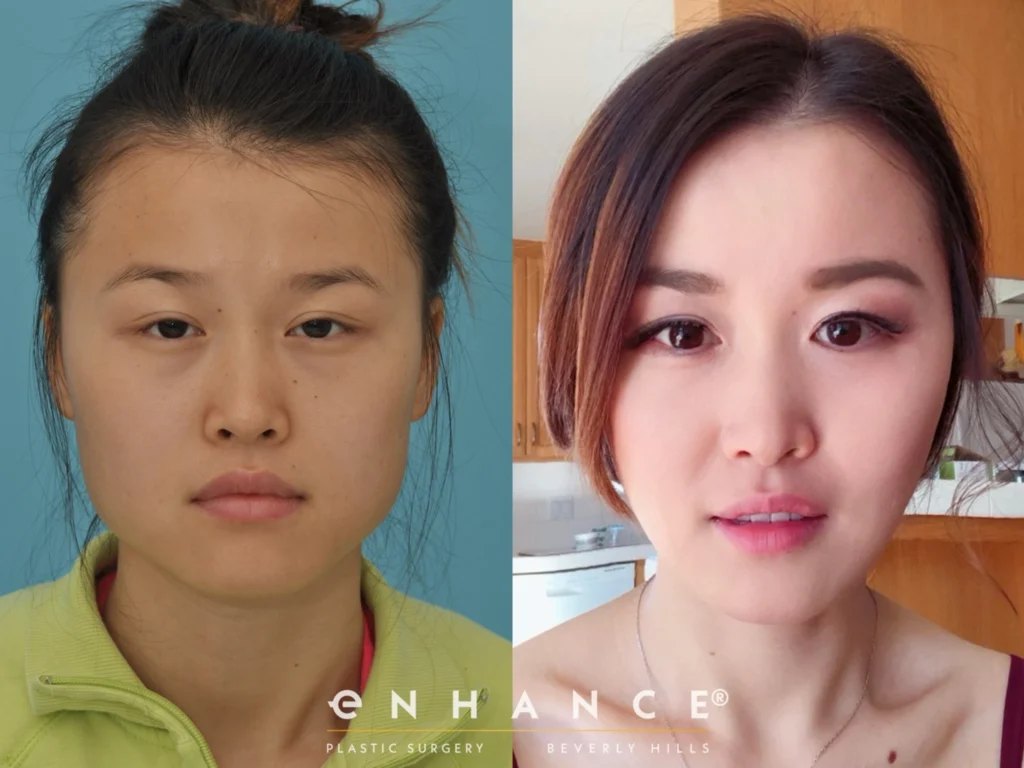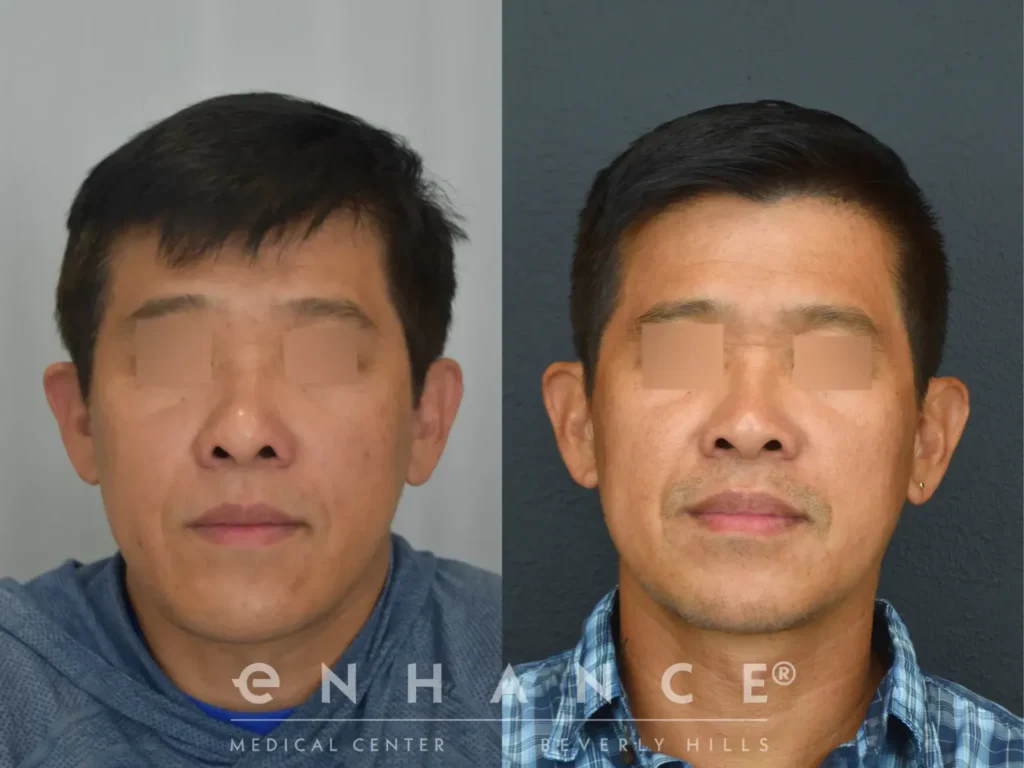Bone Shaving
Overview
Bone shaving surgery is performed on patients with a prominent, masculine jawline. The purpose is to make the face more feminine and slender.
When the jaw appears to be too wide from a frontal view, the outer half of the bone is shaved off. This procedure is performed from inside the mouth. Depending on the circumstance, the prominent masseter muscle may or may not be shaved along with the bone. In cases where the jawline appears to be too prominent from a side view, the bottom borders of the bone can be shaved using an approach from behind the ear. In many cases, the chin is shaved along with the jawline if the chin is also prominent.
Depending on the circumstance, a 3D CT scan is sometimes used for preoperative planning. Most people take about 10 days off work/school for recovery.
Types of Bone Shaving Surgeries
Bone Shaving
This is the traditional method of treating a disproportionate jaw. By manually reducing the amount of bone in the jawline, Dr. Lee can narrow the bone structure and create a more aesthetically-pleasing facial contour.
Non-surgical Jaw Reduction
For those looking for a non-surgical alternative to the jaw shaving procedure, an injection regimen utilizing BOTOX® Cosmetic or Myobloc™ can be used to reduce the prominence of a patient’s facial contours. Dr. Lee was a pioneer of this technique and was the first to present this method of jaw reduction to the American Society for Aesthetic Plastic Surgery.

The Bone Shaving Procedure
Candidates
Patients who are in good health (non-smoking, healthy lifestyle) and would like to reduce the protrusion of their jawline are candidates for a jaw reduction procedure. While jaw reduction is most commonly performed on patients of Asian descent, any person of any race, sex, or ethnicity can undergo this procedure.
The Process
For both surgical and non-surgical jaw reduction, patients will schedule a consultation with Dr. Lee to discuss their aesthetic goals for the treatment. After examining each patient’s condition and reviewing their preferred appearance, Dr. Lee will then make a recommendation on which method is best-suited for the patient’s goals.

Concerns
Surgical Recovery
Some discomfort and pain are to be expected following jaw reduction surgery. Typically, most people return to work after two weeks. Complete healing can take up to 12 months depending on a variety of factors. While you are going through the recovery process, it is important to get ample rest and avoid strenuous activity until cleared by Dr. Lee. You may also be placed on a liquid diet for a few days after your procedure. You will eventually graduate to soft foods and a regular diet as your healing progresses.
Non-surgical Recovery
One of the primary benefits of non-surgical procedures is the lack of recovery and downtime. Mild redness, swelling, and soreness may be present following the procedure, but these symptoms typically subside quickly.
Scars
For surgery approached from inside the mouth, there are no external scars. For the approach from behind the ear, the scar is hidden in the crevice of the ear. Non-surgical reduction utilizes a series of injections, which leaves behind no visible scarring.
Cost
The cost of each procedure is highly dependent on a variety of factors. During your consultation, Dr. Lee will provide you with an accurate estimate for the procedure.
Pain
Patients can expect to experience some pain and discomfort during the initial stages of the surgical recovery, but Dr. Lee will provide prescription pain medication to help mitigate these symptoms. Swelling and soreness typically subside within a few weeks following the procedure.

Frequently Asked Questions
Am I a candidate for non-surgical treatment?
During your consultation, Dr. Lee will discuss your goals and examine your facial structure to determine what options you have.
Is the surgical process painful?
It is typical for patients to experience some pain, swelling, and redness in the jaw area. Dr. Lee will prescribe appropriate medications to mitigate those issues.
What substance is used in the non-surgical jaw reduction option?
Either BOTOX® Cosmetic or Myobloc™ injections are used to reduce the prominence of the jawline.
When will I see my results?
Most patients are able to see their results after three or four weeks of recovery; however, every patient will vary, and individual healing times can run longer or shorter depending on a variety of factors.
What are my options for reducing a prominent jaw?
We offer jaw shaving as well as non-surgical jaw reduction. Non-surgical jaw reduction involves the injection of BOTOX® (botulinum toxin type A) or Myobloc™ (botulinum toxin type B). This type of jaw reduction is a very good alternative to surgery because it carries fewer risks.
How long will the effects of non-surgical jaw reduction last?
Results vary depending on the patient. On average, the effects of BOTOX® are visible for 6 months. If we inject you with a double or triple dose of BOTOX®, the results will usually last 9-12 months. Sometimes non-surgical jaw reduction can lead to permanent results. Permanent results are more likely in patients whose jaw muscles were not originally large, but grew thick with aging.
BOTOX® injections also appear to cause permanent results in those with a medical condition called benign masseteric hypertrophy, which is characterized by pain and enlargement of the jaw muscle. For most patients, I recommend two injections per year for about 3 years. After this point, the results of further injections last quite a long time.


